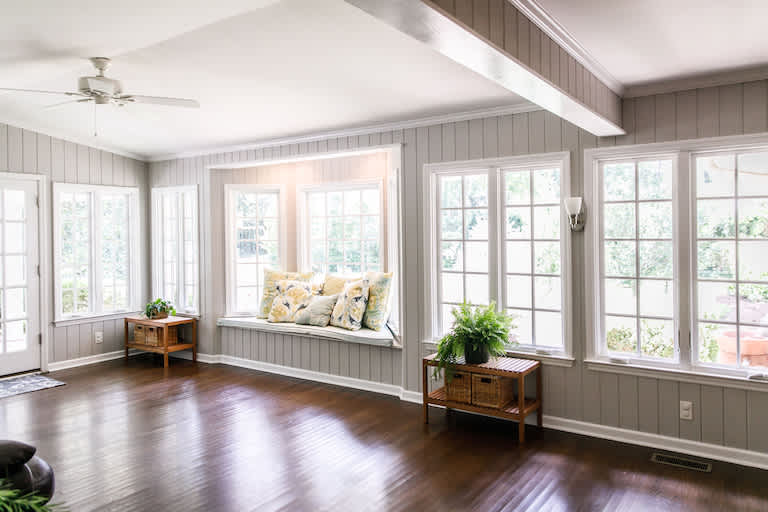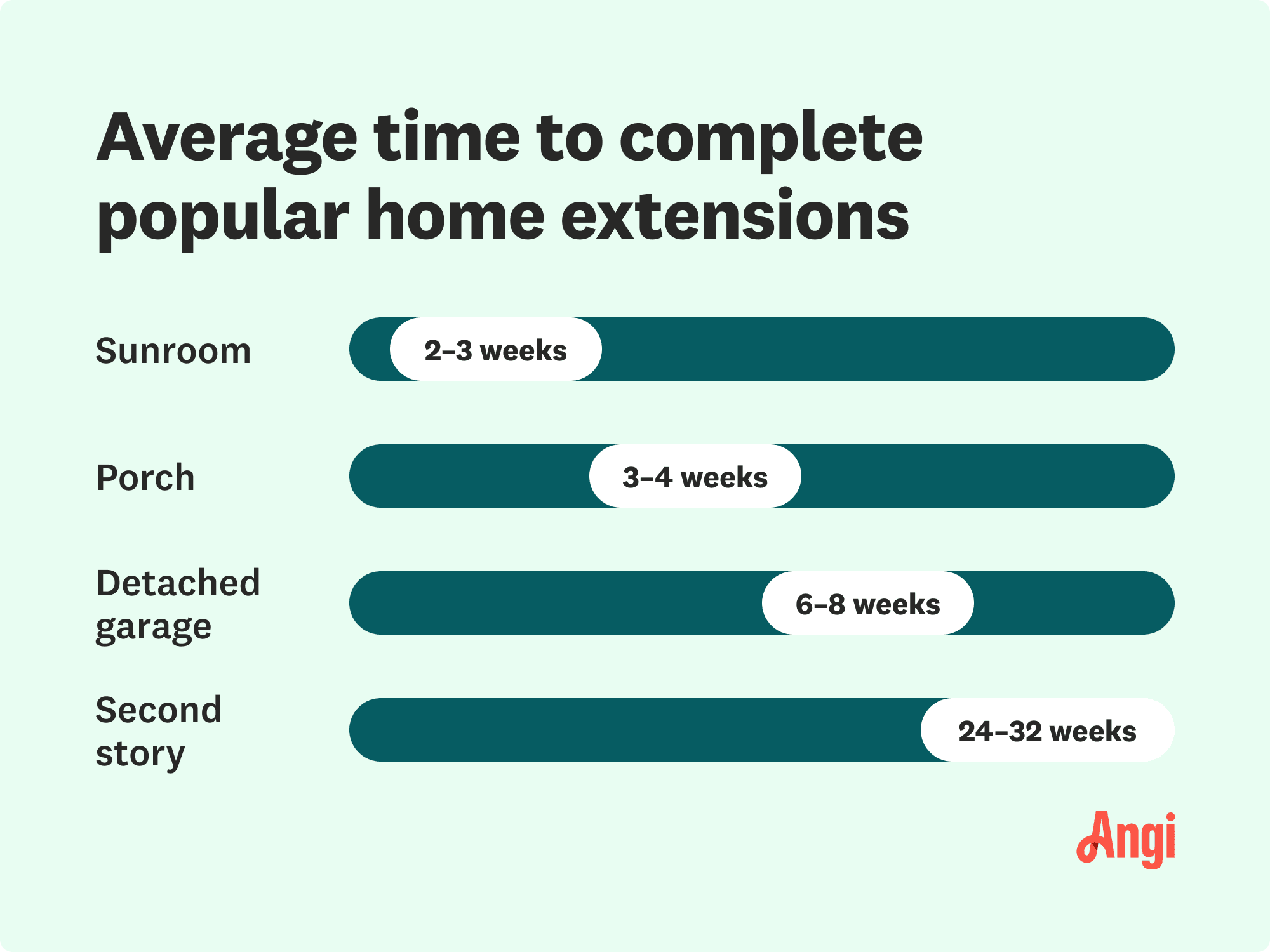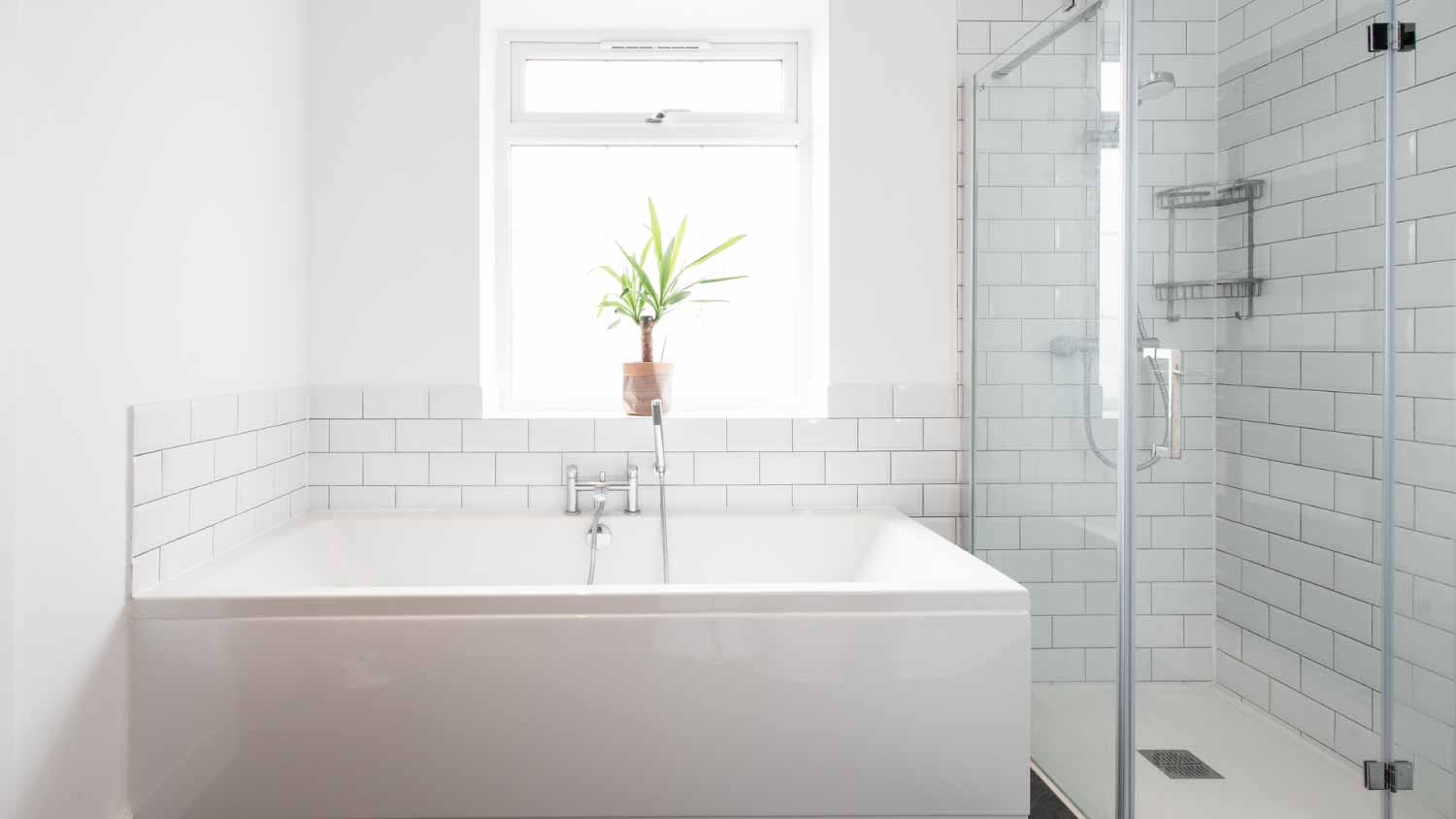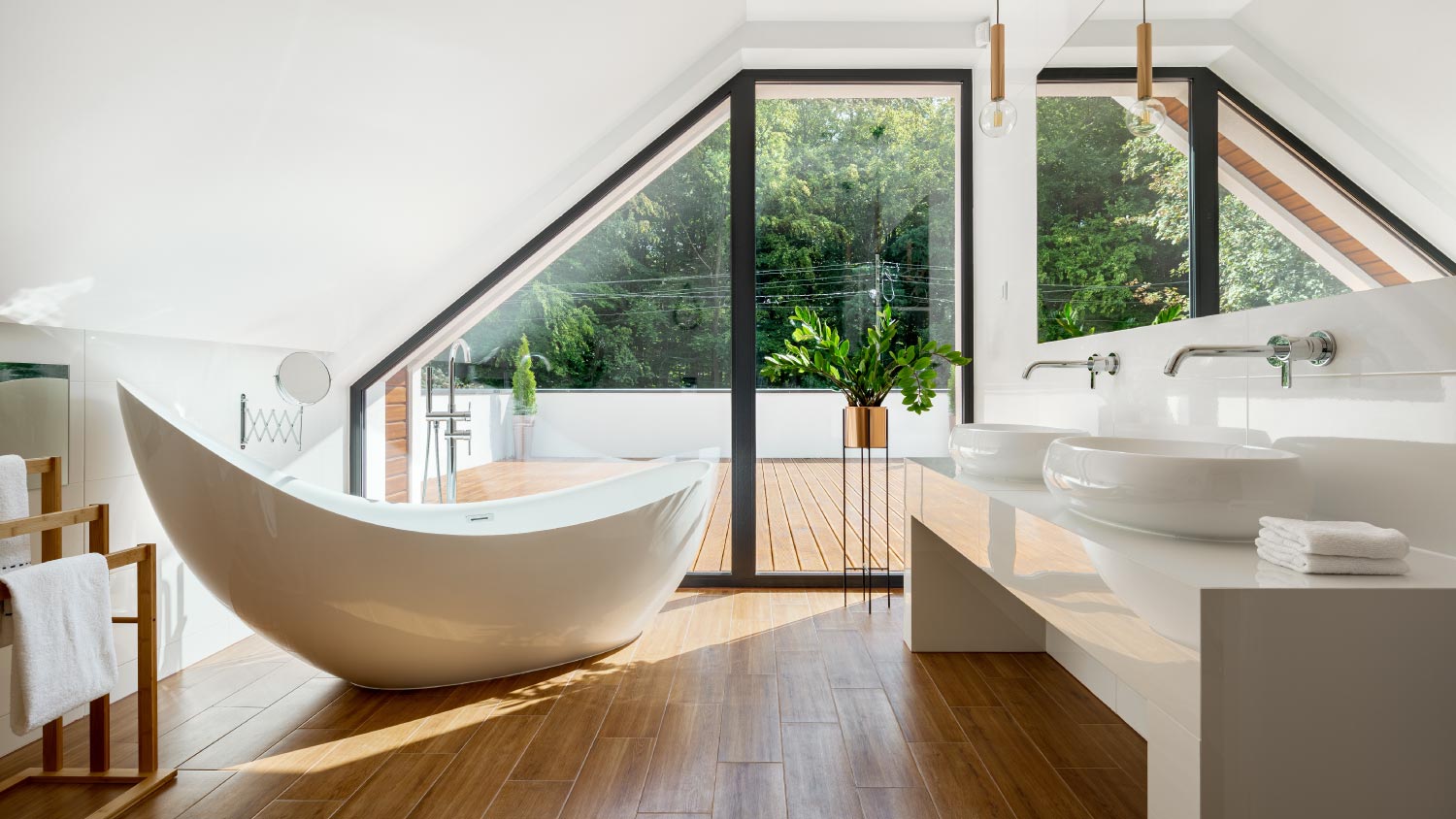
Building a laundry room addition to your home adds value and functionality. Your laundry room addition cost will depend on size, materials, and other factors.
A home addition costs an average of $27,665 in Austin, Texas. Depending on the location, size, type, and materials, most homeowners spend between $12,223 and $46,783.


The two most important cost factors to consider are the size and type of home addition you’re looking to add.
The average lot size in Austin is 0.221 acres, so most residents have space to build out, which saves money over adding onto the second story.
Austin sees long, hot summers, so consider metal roofing that can reflect solar heat and an insulating siding material, like stucco, brick, or stone.
A home addition will increase your home value by an average of between 1% and 2.5%.
A home addition in Austin costs an average of $27,665, and most residents pay somewhere between$12,223 and $46,783. Your total will depend mostly on the size of the addition you want to add and whether you’re building up or out to add that square footage. Many homeowners pay more to upgrade exterior building materials that can better stand up to the extreme heat and severe weather, including supercell thunderstorms.
Some homeowners in Austin, Texas, pay as little as $2,700 to build their home additions, but some projects can cost as much as $83,810. The type and size of the addition you’re planning will largely decide where in that range your total will fall, but material choices, site preparation, permit costs, and local labor costs will also play important roles.
Home additions cost between $40 and $120 per square foot if you’re building out and between $150 and $300 per square foot if you’re building up. The cost to add a 10x10 room to a house in Austin costs an average of about $8,000 if you build out and $20,000 if you build up.
Remember that if you add square footage to your home, the cost of your homeowners insurance will increase accordingly. Before you embark on this project, speak to your insurance company about expected costs.
The average lot size in Austin is roughly 0.221 acres, which is above the national average. This leaves plenty of room for the average homeowner to build out instead of adding onto their second stories. Building out is more affordable, so this is one key reason why home addition costs in Austin are well below the national average.
| Size (Sq. Ft.) | Building Out | Building Up |
|---|---|---|
| 60 | $2,600-$6,500 | $9,750-$16,250 |
| 80 | $3,450-$8,700 | $13,000-$21,700 |
| 100 | $4,300-$10,850 | $16,250-$27,100 |
| 150 | $6,500-$16,250 | $24,350-$40,650 |
| 200 | $8,650-$21,700 | $32,500-$54,200 |
| 300 | $13,000-$32,500 | $48,750-$81,300 |
| 400 | $17,300-$43,350 | $65,000-$108,400 |
Where in those ranges your total falls also depends on the complexity of the room and its finishes. For example, adding a bathroom will often cost more than a bedroom since it requires additional plumbing and electrical work.
As you can imagine, it takes many kinds of building materials to complete a custom home addition. Material prices vary widely, so your price could push closer to $46,783 if you choose high-end materials at each step of the way. Luxury materials will maximize your costs, and you may not see a return on investment (ROI) that justifies the added cost, unless you live in a more expensive neighborhood, like West Lake Hills or Rollingwood.
Interior materials are all up to personal preference, but the exterior materials you pick need to be suited to the local climate. For example, upgrading to metal roofing that can reflect solar heat or clay tile roofing that insulates your home from the hot outdoor temperatures is wise, even if it costs more, because these materials can reduce cooling costs over time. Similarly, you may want to consider upgrading siding and window materials to ensure they boost energy efficiency and can stand up to intense winds and blown debris during supercell thunderstorms.
The tables below should provide an idea of how material options can affect your pricing, but ask your home addition contractor if something specific would work well for your home.
Foundation Materials Cost:
| Foundation Material | Cost | Pros | Cons |
|---|---|---|---|
| Crawl space | $20–$37/sq. ft. | Room for utilities | Expensive excavation |
| Slab | $5–$16/sq. ft. | More affordable | No underhome area |
Insulation Materials Cost:
| Insulation Material | Cost | Pros | Cons |
|---|---|---|---|
| Blown-in | $0.60–$2.30/sq. ft. | Lower cooling costs | Expensive |
| Fiberglass batts | $0.30–$0.40/sq. ft. | Easy to install | Energy efficiency |
| Rigid foam | $0.25–$0.50/sq. ft. | High R-value | Hard to install |
Roofing Materials Cost:
| Roofing Material | Cost | Pros | Cons |
|---|---|---|---|
| Asphalt shingles | $1–$4/sq. ft. | Most affordable | Absorbs more heat |
| Clay/concrete tile | $3–$13/sq. ft. | Great insulation | Heavy material |
| Metal | $4–$16/sq. ft. | Reflects solar heat | Most expensive |
Siding Materials Cost:
| Siding Material | Cost | Pros | Cons |
|---|---|---|---|
| Brick | $10–$20/sq. ft. | Stands up to impact | Expensive |
| Fiber cement | $5–$14/sq. ft. | Value | Heavy material |
| Stone | $7–$30/sq. ft. | Value add | Most expensive |
| Stucco | $7–$9/sq. ft. | Great insulation | Prone to cracking |
| Vinyl | $3–$12/sq. ft. | Most affordable | Minimal insulation |
Window Frame Materials Cost:
| Window Frame Material | Cost | Pros | Cons |
|---|---|---|---|
| Aluminum | $75–$400 each | Most affordable | Minimal insulation |
| Composite | $300–$1,200 each | High insulation | Up-front cost |
| Fiberglass | $500–$1,500 each | Best insulation | Most expensive |
| Vinyl | $100–$900 each | Best value | Can fade in sunlight |
| Wood | $150–$1,300 each | Beautiful aesthetic | Expands with heat |

The cost to add on a room varies based on the type of home addition and the size of the room you’re building. Remember that any home addition that involves building out, like a bumpout or sunroom, is going to be more affordable on a per-square-foot basis than those that involve building up, like a second-story addition.
| Addition Type | Average Cost |
|---|---|
| Bumpout | $5,400–$23,300 |
| Detached garage | $10,400–$18,200 |
| Dormer | $3,200–$13,600 |
| In-law suite | $13,600–$143,700 |
| Second-story | $54,200–$135,500 |
| Sunroom | $11,900–$40,700 |
The purpose of your add-on also matters. Rooms like kitchens and bathrooms require plumbing work that a bedroom doesn’t, while an unfinished attic home addition may not require electrical or HVAC work that a bedroom needs. The cost per square foot for your home addition will vary based on utilities and the finishes required for how you plan on using the extra square footage.
On average, site prep for a home addition costs between $1,500 and $5,000. You may not need any site prep in some cases, while other home addition projects may require grading land, demolishing concrete patios, removing trees, and other work that can add to your total.
Since most Austin residents have the room to build out on their oversized properties, and since many choose to do so to save on home addition costs, you’re more likely to need heavy site prep in the city to prepare for construction. Any project that involves heavy excavation can push your total well beyond $5,000 since the soil in Austin has a high clay concentration and is known to be challenging to work with.
In Austin, you’ll need building permits for your home addition, so it’s a good idea to budget for permit fees to get the most accurate price possible. The City of Austin charges for building permits based on the square footage you’re adding. You can use the table below to calculate your permit fees in Austin, but always double-check with your contractor to make sure you don’t need additional permits.
| Size (Sq. Ft.) | Permit Cost |
|---|---|
| 100 or below | $172.78 |
| 101–200 | $172.78 |
| 201–300 | $518.34 |
| 301–400 | $691.12 |
| 401–500 | $863.90 |
| 501+ | $1,036.68 |
Labor accounts for an average of between 40% and 60% of your total, so you can expect to pay a homebuilder in Austin an average of between $11,000 and $16,600 to handle your project. In total, this is well below what you’d pay in most other cities because the cost of a home addition in Austin is just over 50% of the national average, but the above-average cost of living in the area does contribute to higher labor costs on an hourly basis.
For the most accurate estimate possible, you should also consider sales tax, which your pro will charge on top of the base cost for your addition. The sales tax rate in Austin is 8.25%, so expect to pay an average of $2,282.36 in taxes for your project.
Yes, a home addition will increase your property value, as the project provides an average ROI of between 20% and 50%. In Austin, that means an addition will add between $5,500 and $13,900 to your home value. With average real estate prices in the city sitting at $556,000, that’s a total value increase of between 1% and 2.5%, on average.
You can maximize your ROI by choosing high-quality exterior building materials that will stand up to intense heat and some extreme wind and a risk of impact during supercell thunderstorms. Some materials that can help boost your return include metal, clay, or concrete roofing, fiber cement, stucco, brick, or stone siding, and composite or fiberglass windows with double-pane glass for maximum insulation.
Home is the most important place on earth, which is why Angi has helped more than 150 million homeowners transform their houses into homes they adore. To help homeowners with their next project, Angi provides readers with the most accurate cost data and upholds strict editorial standards. We survey real Angi customers about their project costs to develop the pricing data you see, so you can make the best decisions for you and your home. We pair this data with research from reputable sources, including the U.S. Bureau of Labor Statistics, academic journals, market studies, and interviews with industry experts—all to ensure our prices reflect real-world projects.
Want to help us improve our cost data? Send us a recent project quote to [email protected]. Quotes and personal information will not be shared publicly.
From average costs to expert advice, get all the answers you need to get your job done.

Building a laundry room addition to your home adds value and functionality. Your laundry room addition cost will depend on size, materials, and other factors.

Remodeling your bathroom can add significant value to your home. Your bathroom remodel cost in Columbus, OH will depend on size, fixtures, materials, labor, and other factors.

Small kitchen remodels cost $12,750 on average, depending on the materials, size, labor, and more. Read this to calculate your kitchen remodel costs.

An updated bathtub can give a bathroom a whole new look. Find out how much it costs to replace a bathtub in Austin, TX, including prices by type and labor costs.

This prep and staging area has numerous uses in the versatile modern home. Here’s what a butler’s pantry does and how you can add one to your home.

An updated bathtub can give a bathroom a whole new look. Find out how much it costs to replace a bathtub in Orlando, FL, including prices by type and labor costs.